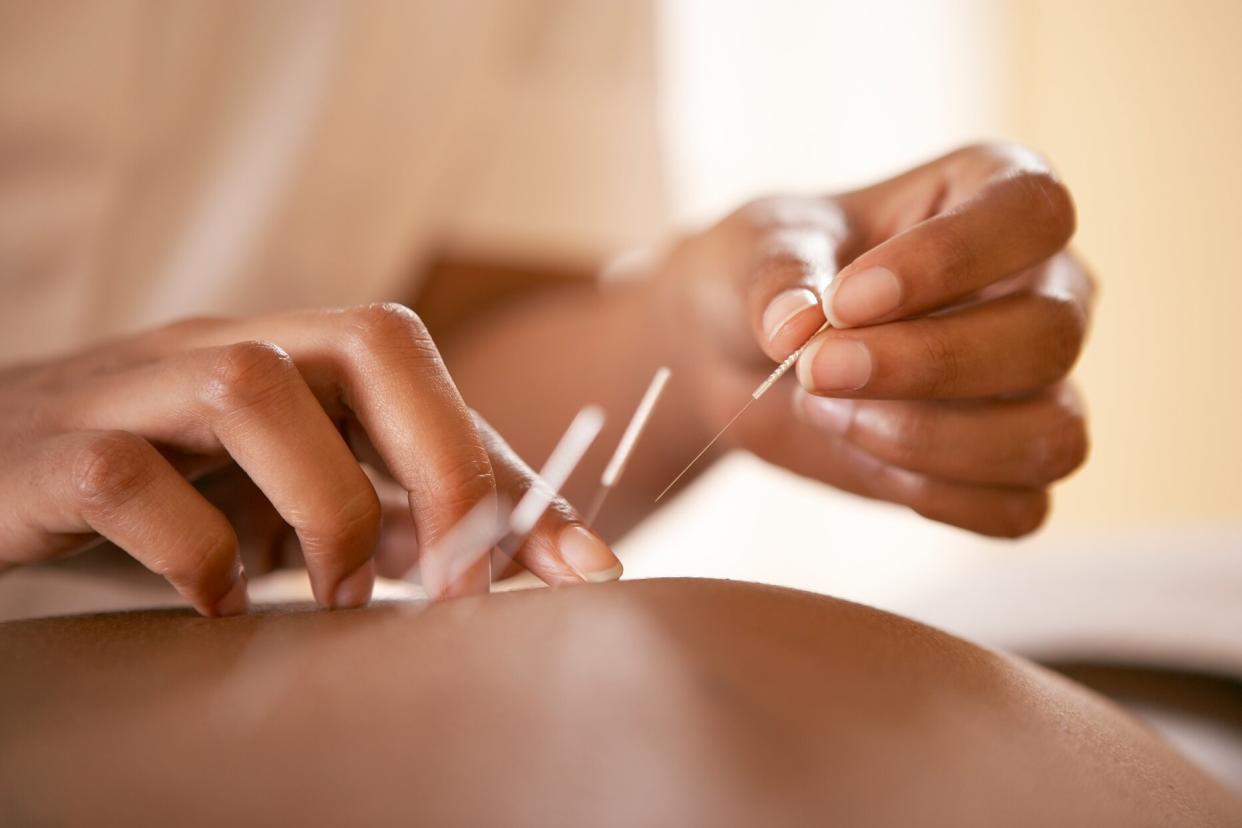A Beginner's Guide to Acupuncture

Getty / Science Photo Library - ADAM GAULT
Acupuncture has been practiced for thousands of years as a form of traditional Chinese medicine and is rooted in the belief that the human body is a delicate balance of yin and yang. Those two forces are seen as opposing, but also inseparable, and when they are out of balance, the theory is that disease takes over the body. To fix this, an acupuncturist will insert a thin needle into a specific point in the body to move energy and restore balance—today, this is known as acupuncture. Want to learn more? We spoke with these two acupuncturists to find out everything you need to know about the practice, including why you should book an appointment the next time you're feeling off balance.
Related: How To Integrate Western and Eastern Medicine
It's actually painless.
If the thought of needles being inserted into your skin has kept you from checking out acupuncture, Monique Larson, DAOM, L.Ac. at the Traditional Chinese Medical Clinic, says you can rest easy: The experience doesn't actually hurt. "Some patients feel some sensation when the needle is inserted while others do not feel any discomfort," she says, adding that most patients experience deep relaxation during the treatment and leave with a sense of well-being.
Sherry Chang, L.Ac., who practices at the Acupuncture Studio of Williamsburg Brooklyn, agrees. "Most people feel a tiny pinch on insertion, but it's not painful," she says. "There might be some tingling, aches, and dullness but those are normal reactions."
Expect to do a lot of talking.
Once you've made an appointment, Larson says you can expect your first visit to include an in-depth consultation with your practitioner: "You will be asked a variety of questions that might not feel like they are related to your chief complaint, so it is important for you to know that all of the information gathered is connected and is helpful in creating your personalized treatment plan." Because Chinese medicine looks for patterns to make a diagnosis, your practitioner will look at your tongue, take your pulse, and may check your abdomen to confirm their diagnosis.
After the initial intake, Chang says your practitioner will choose the appropriate acupuncture points combination that they believe will help you. "You will lay on a table (massage table usually) and they will insert those needles," she says. Since there are more than 361 acupuncture points, there are a lot of variables. The insertion depth of the needle varies greatly based on location, the patient's constitution, and the practitioners intention, she explains, but generally needles are inserted anywhere from one millimeter to one inch in depth. "You would lay down for about 30 minutes, sometimes more sometimes less," she says. "I like to play soothing music or a guided meditation that will help the patient either relax, nap, or focus on an intention for themselves."
Herbs might also be part of the equation.
Larson says there may be more to your visit than just the needles. "Your practitioner might pair Chinese herbs along with acupuncture and lifestyle suggestions to help bring your body into balance," she notes. As for the benefits of this holistic approach? They include reduced stress, relief from menstrual pain, headaches, hormone disorders, pain relief from orthopedic issues, improved sleep, improved immune system (meaning less sick days!), enhanced mental clarity, allergy relief, improved digestion, relief from depression and anxiety, relief for lung conditions, reduced eye strain, and an overall sense of well-being.

